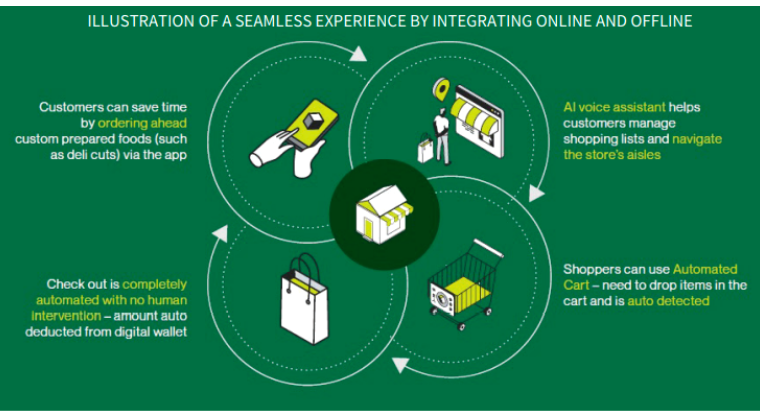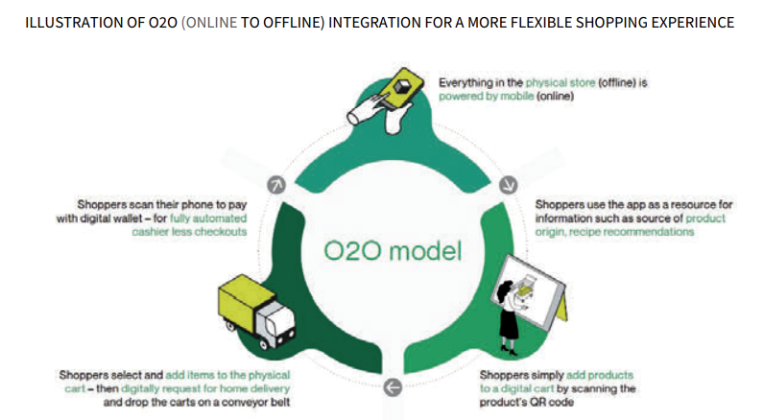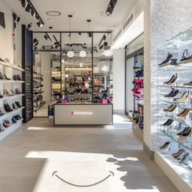Winds of change

Retail
141 week ago — 6 min read
Changing consumer preference coupled with emerging trends like ‘seamless’ retail, next-gen stores, personalisation, the rise of mega ecosystems, and emerging revenue models are likely to shape the retail landscape. While some of the preference shifts are short term in nature, several others are likely to have long-term implications for the supply side. Recognising these trends and responding to them proactively and in an agile manner can help retailers create a winning strategy for the coming decade.
The RAI-BCG report Racing towards the next wave of Retail in India, underscores innovative practices adopted by global retailers and the key emerging trends. Globally, five major emerging trends are being observed that are shaping the future of retail.
1. 'Seamless' retail
Consumers no longer see boundaries between online and offline channels of consumption. This has led global players to experiment ways to create seamless retail experiences that are integrated across all channels.

2. Emerging revenue models
Retailers are experimenting with revenue models to enhance their customer value proposition, by leveraging both traditional methods and emerging e-commerce models. Two examples of how traditional retailers are diversifying existing offerings are: Extension of core retail – using new revenue streams for existing product line like Product Rentals and Paid Memberships; and Retail as a Service - Providing services to complementary 3rd party sellers like – Advertising Services and Marketplace Hosting.
There is an emergence of many ecommerce models, unlocking new customers for retailers. These include:
Video/Live: Using livestream / pre-recorded videos to drive customer purchase journeys. The video route helps generate interest (short videos), share product details (live videos) and answer customer queries in real time.
Influencer-led: This leverages ‘Key Opinion Leaders (KOLs)’, who have a steady following to endorse/ review the brand’s products or services, demonstrate hacks of the products, explain its pros and cons.
Reseller-led: This is how it works: Resellers are used to sell a curated set of products in their circle. Consumers trust the recommendation of the reseller for product quality and prices. Supplier holds inventory & 3rd PL fulfils delivery to the customer.
3. Rise of mega ecosystems
Rising competition and the need to constantly improve the customer value proposition is driving the rise of mega ecosystems, through acquisitions, partnerships, etc. which benefit both the shoppers and the retail partners. There are four key drivers fuelling the rise of ecosystems: Access a broad set of capabilities & resources, while competing on core strengths; Scale quickly, before competitors mobilize; Remain competitive by lowering the cost to compete; and provide an improved value proposition to customers, through more services/ products under one platform.

4. Personalisation at the core
Availability of quality data and the willingness of customers to share the same has enabled retailers across the world to deliver unique customer experiences. Personalization across all channels is the next big opportunity. Providing every shopper with a unique journey across every single touchpoint and channel. Customers get a curated, concierge experience while companies engage with individuals rather than just segments. Key factors driving the personalisation wave globally include:
Differentiation: Hyper-personalisation provides key differentiation opportunity for retailers.
Customer Expectations: Customers are now expecting personalised, convenient, and customised solutions and experiences.
Data Abundance: Availability of quality data, a pre-requisite for creating personalised customer experience.
Tools & Tech-Enablement: Technology to deploy personalisation is now becoming a reality across retail touchpoints.
Retailers across the world are using personalization to deliver superior customer experiences. Companies that used advanced personalisation methods reported more than 10% incremental revenue, increase in average order value in excess of 40% and over 20% increase in Net Promoter Score (NPS) score.
5. Next-gen stores
Brands are experimenting with new approaches to connect with shoppers, through in-store experiential concepts and using technology for blending digital content and the environment.
As a result, store formats are evolving driven by consumer shifts, tech innovation and disruptors. Multiple factors are influencing the Physical Store Format.
Factors that are primarily influencing front-end include: Smaller format & urban-sized stores with a focus on convenience, new delivery & pick-up models, non-transactional reasons to visit & create loyalty and preference, advantage over easier/ lower price channels, integration of online & offline experience to ensure frictionless transactions, Consistent touchpoints throughout customer journey, integration of high-tech shopping experiences in-store for discovering and purchasing e.g.., Augmented Reality and Beacons and Digital Signage.
Factors primarily influencing back-end include: Use of new technologies to cut labour costs and increase efficiencies in the store. E.g. self-checkout and robots for inventory management.
Also read: Winning ways
Article source: STOrai Magazine
Image source: Canva
Disclaimer: The views and opinions expressed in this article are those of the author and do not necessarily reflect the views, official policy or position of GlobalLinker.
Network with SMEs mentioned in this article
View STOrai 's profile
Other articles written by STOrai Magazine
The Art & Science of People Pleasing in Retail
11 week ago
Most read this week
Trending
Learning & Development 43 week ago













Comments (1)
Share this content
Please login or Register to join the discussion